Back to the Future for Computers
What happened to the computer? If you are old enough to remember the 1980's you may recall the explosion of home computers that occured, some of the most popular being:
- Sinclair Research's ZX80, ZX81 and Spectrum.
- Commodore Business Machines VIC-20, Commodore 64 and Amiga.
- Atari's 400, 800 and ST.
- Acorn Computers BBC Micro, Electron and Archimedes
- Apple IIe
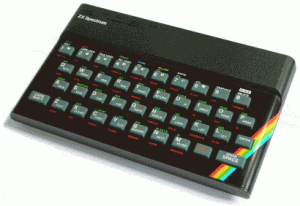
Unlike the video games consoles (such as the Atari 2600) not only could these systems be used to play games, they could also be programmed, usually in Beginner's All-purpose Symbolic Instruction Code (BASIC). These easy to use computers provided many with the education needed to forge successful careers, and build successful businesses in the new Information Technology industry that emerged in the 1990's as the Internet sprang into life. What was great about these computers was the immediacy, intimacy, responsiveness and quick boot time. It was only seconds from turning the power on to starting to type a computer program. A computer program that could easily access the raw hardware of the computer. Unlike the typical computers purchased on the high street today, which are over engineered, power hungry, bloated and slow booting devices. So despite a quarter of a century of technological advances, how did we end up with expensive devices that kids cannot easily program?

The return of the "bicycle for our minds"
It was probably the ending of the distinct home computing market in the earlier 1990's that saw the end of these quick booting and easy to program systems. The new breed of video games consoles (starting with the NES), the drastic fall in the price of IBM compatible business computers, and the birth of the Internet all saw the demand for programmable home computers virtually disappear, along with their unique advantages. This meant computing became about choosing your font for a report, producing a slideshow or filling in a spreadsheet. In a 1990 TV documentary (Memory & Imagination: New Pathways to the Library of Congress) Steve Jobs talks about how the bicycle greatly increases the efficiency of human motion and sees the computer as "the equivalent of a bicycle for our minds". In other words using the computer we can greatly increase the efficiency of our imaginative, creative and logical thought processes.
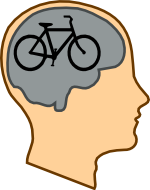
However, to push the technology further, to gain further increases in efficiency we need more computer engineers and scientists. Unfortunately the modern high specification computer does not encourage the inspiring of the next generation to take up computing as a career. The fancy GUIs hide the underlying hardware and they do not provide accessible programming tools, however that is set to change. Just as several factors saw the death of the simple home computer, several factors see the re-emergence of quick starting and easy to program mass market devices:
- The Android Operating System.
- New simpler to use and cheaper to buy devices.
- New thinking on teaching computing.
The Android Operating System
The need to access the Internet may have been a factor in the downfall of the simple home computer, however, without the Internet we would not have had Google, and hence the success of the Android Operating System. The popularity of Android on smartphones and tablet devices, along with the iPhone and iPad has reminded us on how great it is to have a quick booting and easy to use computer. Take for example an Android tablet. When it is first turned on there are a few set up steps to perform, these are easy enough to understand and essentially boil down to:
- Select a language.
- Select Wifi and enter the details.
- Enter your Google account details.
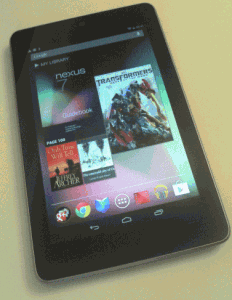
There are a couple of other screens to go though but once done it syncs your exsting account information (email, calender, apps etc.) and it is good to go. You can access the Internet, type emails, read books, play music and films, translate languages, etc. It even turns on and off instantly (well it just sleeps when not in use). All through an easy to use touch interface. Compared to using a bloated laptop it feels like kicking free from shackles, iPad users will be familar with that feeling.
Even better Android is open source, sitting on top of a Linux kernel is a well designed and easily modifiable Operating System that is available for, and has been used for, many other projects, including the emerging mass produced single board computers.
Simpler to Use and Cheaper to Buy Devices
Tablets and smartphones are not the only new devices that bring us back to that home computing feeling. In the UK the Rasberry Pi Foundation was established to provide an inexpensive device that can be given to children to learn about computing at the lowest level. Whilst similar boards have always been around the Rasberry Pi provides a cheaper and better promoted option. Its success has provided new options for getting hackable hardware into the hands of budding computer engineers and programmers. The Pi runs Linux but can also be booted using Android or RISC OS (used on late 80s Acorn Archimedes).
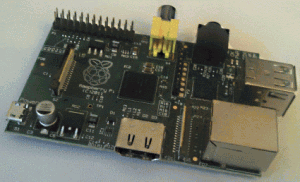
The Taiwanese company VIA Technologies has also brought to market a cheap (£68) and efficient device. The APC, Android Personal Computer, as the name suggests is a small computer that runs the Android OS, like the Raspberry Pi is uses a SD card to store the software. Again with open software and no moving parts it provides a good teaching platform. On the APC website VIA references the Steve Jobs quote by referring to it as A Bicycle for Your Mind, and they believe it is time to bring out a device that harks back to those early home computing principles.
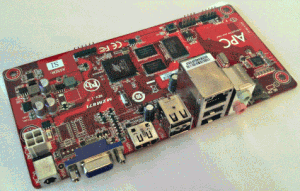
New Thinking on Teaching Computing
In the early 1980s the British Broadcasting Coporation (BBC) Computer Literacy Project led to the production of the BBC Micro and associate TV show The Computer Programme and its follow up shows. Subsequently the BBC Micro became popular in UK schools for the teaching of computing topics. Unfortunately the switch to IBM compatible business computers in schools saw a switch from teaching computer programming to teaching the use of business applications under the Information and Communication Technology (ICT) curriculum. To address the problem of a drop in the number of children learning low level computing skills in the UK the Computing at School (CAS) Working Group was established. It was also the reason that the Raspberry Pi Foundation created the Raspberry Pi. Action by these groups and others has seen a shift back towards the type of computing education that was common in the 80s and early 90s, and hopefully produce the next wave of computer scientists, engineers and developers ready to use the new devices as learning platforms.
Back to the Future
To bring the fun back into future computing people have looked back at what made computing enjoyable for kids in the past. It wasn't Powerpoint presentations and fancy formatting and other types of fluff that prevails in modern computers. It was about accessing the hardware and playing with code. Strangely the team responsible for the BBC Micro and the first wave of computer learning went on to design the Advanced RISC Machine (ARM) processor which subsequently has become the dominate processor in the mobile market place, both Android and Apple products use ARM processors. And it is an ARM processor that powers the Raspberry Pi and APC, the cheap devices that will hopefully inspire the next processor designers.
Acknowledgements
All images in this article are in the Public Domain except for the ZX Spectrum for which copyright information is available here: http://commons.wikimedia.org/wiki/File:ZXSpectrum48k.jpg
Steve Jobs for What a computer is to me is it's the most remarkable tool that we have ever come up with. It's the equivalent of a bicycle for our minds. which is often misquoted/paraphrased as Computers are like a bicycle for our minds.
Author:Daniel S. Fowler Published: Updated:







